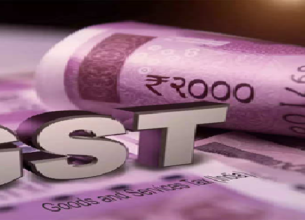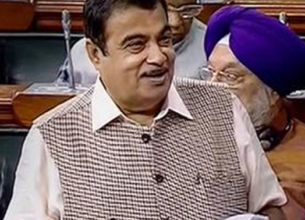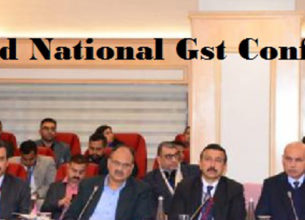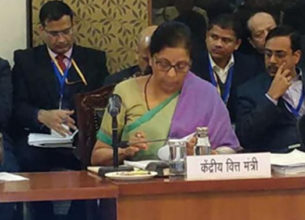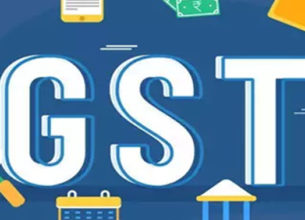GST revenues rise 15% in December 2022, says Finance Ministry
02, Jan 2023
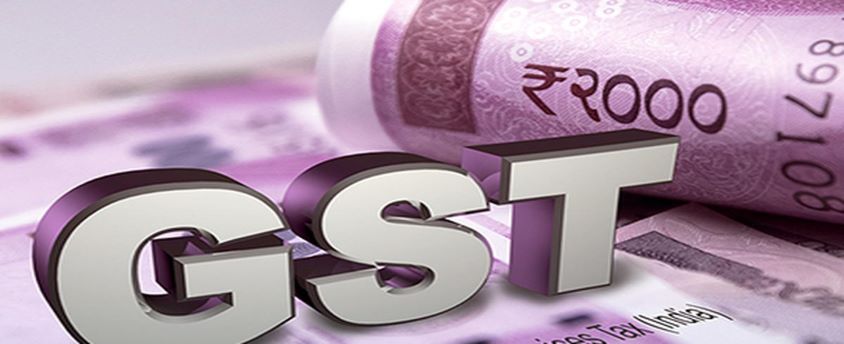
Prelims level : Taxes and Taxation
Mains level : GS-II Functions and responsibilities of the Union and the States, issues and challenges pertaining to the federal structure, devolution of powers and finances up to local levels and challenges therein.
Why in News?
- India’s Goods and Services Tax (GST) revenues rose to nearly ₹1.5 lakh crore in December 2022, 15% higher than a year ago and 2.5% over November’s collections that had marked a three-month low.
About the News:
- This is the tenth month in a row that GST collections have crossed the ₹1.4 lakh crore mark, with revenues from import of goods rising 8% and revenues from domestic transactions (including import of services) up 18% from the revenues yielded by these sources during December 2021.
- The gross GST revenue collected during December 2022, which reflect transactions undertaken in November, is ₹1,49,507 crore, of which Central GST (CGST) is ₹26,711 crore, State GST (SGST) is ₹33,357 crore, Integrated GST (IGST) is ₹78,434 crore (including ₹40,263 crore collected on import of goods) and Cess is ₹11,005 crore (including ₹850 crore collected on import of goods), the Finance Ministry said.
- “The Government has settled ₹36,669 crore to the CGST and ₹31,094 crore to SGST from IGST as regular settlement. The total revenue of Centre and the States after regular settlements in the month of December 2022 is ₹63,380 crore for CGST and ₹64,451 crore for the SGST,” it added.
- On a sequential basis, while there was a 2.5% rise in revenues from November to December 2022, the number of e-way bills generated went up 3.95% to 7.9 crore in December.
- While revenues from domestic transactions rose 18% overall, a dozen States recorded higher growth in tax collections and 13 States reported slower growth rates.
- Goa, Odisha and Manipur reported a contraction in revenues of 22%, 6% and 5%, respectively, even as Chhatisgarh’s revenues were flat year-on-year.
- Bihar reported the highest growth in revenues at 36%, followed by Nagaland (30%), the erstwhile State of Jammu and Kashmir (28%), Arunachal Pradesh (27%), with Gujarat and Andhra Pradesh seeing GST inflows rise by 26% each. Tamil Nadu’s revenues rose 25%, followed closely by Rajasthan and West Bengal (24%), Madhya Pradesh (22%) and Maharashtra (20%).
- Among the Union Territories, Ladakh reported a sharp 68% spike in revenues, followed by Dadra Nagar Haveli (37%), Chandigarh (33%) and Puducherry (30%). However, Daman and Diu reported a whopping 86% drop in GST collections, with Lakshadweep and Andaman and Nicobar Islands also recording contractions of 36% and 19%, respectively.
- Abhishek Jain, partner indirect tax, KPMG said the robust GST collections suggest that ₹1.5 lakh crore may be ‘the new normal’ for monthly revenues, as the December’s numbers came in after peak festive sales are over.
What are the reasons for the Rise of the GST?
- The sharp surge has come on the back of anti-evasion measures, “especially action against fake billers”, and a pick-up in economic activity.
- Rate rationalization measures undertaken by the GST Council to correct ‘inverted duty structure’.
- Inverted Tax Structure refers to a situation where the rate of tax, that is GST, on inputs is higher than the rate of tax on output supplies or finished goods.
- Economic recovery and increased domestic consumption.
- The total number of e-way bills generated in February was 6.91 crore, higher than 6.88 crore seen a month ago, despite it being a shorter month, which indicates the “recovery of business activity at faster pace”.
What is Goods and Services Tax?
- GST was introduced through the 101st Constitution Amendment Act, 2016.
- It is one of the biggest indirect tax reforms in the country.
- It was introduced with the slogan of ‘One Nation One Tax’.
- The GST has subsumed indirect taxes like excise duty, Value Added Tax (VAT), service tax, luxury tax etc.
- It is essentially a consumption tax and is levied at the final consumption point.
- This has helped mitigate the double taxation, cascading effect of taxes, multiplicity of taxes, classification issues etc., and has led to a common national market.
- The GST that a merchant pays to procure goods or services (i.e. on inputs) can be set off later against the tax applicable on supply of final goods and services.
- The set off tax is called input tax credit.
- The GST avoids the cascading effect or tax on tax which increases the tax burden on the end consumer.
Tax Structure under GST:
- Central GST to cover Excise duty, Service tax etc,
- State GST to cover VAT, luxury tax etc.
- Integrated GST (IGST) to cover inter-state trade.
- IGST per se is not a tax but a system to coordinate state and union taxes.
- It has a 4-tier tax structure for all goods and services under the slabs- 5%, 12%, 18% and 28%.



